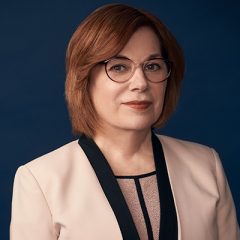By Nora OBrien-Suric, Ph.D.
President

“Do I buy groceries or pay premiums? I will go to urgent care if something happens.”
“I knew I’d be asked about what type of insurance I had, not how are you.”
“My parents are educated and they can’t even tell me what kind of plan is best for me.”
In three listening sessions held in fall 2018, income-eligible residents of Erie and Chautauqua counties talked candidly about the barriers that keep them from accessing health insurance through premium assistance tax credits under the Affordable Care Act (ACA), or through Medicaid, Medicare or the Children’s Health Insurance Program (CHIP).
This is a crucial issue because we know that not having health insurance is a significant barrier to accessing care. We also know that having health insurance improves health outcomes, including reduced infant and child mortality, fewer hospital and emergency room visits in adulthood, and lower rates of depression.
That’s why the Health Foundation for Western and Central New York, in 2017, adopted the position that access to health care is a basic human right, and has set a goal of closing the gap between those who have coverage and those who don’t by 2027.
In New York State today, there are an estimated 640,000 people without health insurance who appear to meet eligibility standards. That accounts for more than two-thirds of the 1.1 million New Yorkers who remain uninsured, as the Health Foundation and United Hospital Fund detailed in the recent report, Reaching the Five Percent: A Profile of Western and Central New Yorkers Without Health Coverage.
Identifying and addressing those barriers is critical to the Health Foundation’s goal of closing the gap, and the listening sessions—conducted by our partner, the National Council on Aging (NCOA)—found that the top three barriers to accessing health insurance are:
- Trust. Participants said they want to get information from trusted family members, close friends, and local community members—not from officials or online sources.
- Cost. There are widespread assumptions and misconceptions about the cost of health insurance that need to be better addressed.
- Messaging. Rather than a general campaign to educate the public about health insurance options, trusted, local community “champions” should be empowered to share information—one-on-one when possible.
In July, the Health Foundation and NCOA hosted a webinar to present some of the findings from the listening sessions and discuss strategies to more effectively reach the uninsured and underinsured. An archived video of the hourlong webinar is available to watch. The webinar featured Diane Oyler, the Health Foundation’s vice president of programs; Randy Feliciano, NCOA program manager; Nikki Kmicinski, executive director of the Western New York Integrated Care Collaborative; and Christine Cheronis, aging services and Medicare health insurance coordinator for the Chautauqua County Office for the Aging.
Moving Forward in Central and Western New York
Building on the Reaching the Five Percent report and the listening sessions, the Health Foundation is moving forward with collaborative efforts to learn more about the best ways to reach the uninsured in both regions that we serve.
On Aug. 27, from 8:30 a.m. to noon, the New York StateWide Senior Action Council, with support from the Health Foundation, will host simultaneous forums connected by teleconference in eight central New York counties to discuss “Barriers and Solutions to Accessing Healthcare in Central New York.”
Peter Newell, director of the Health Insurance Project of the United Hospital Fund and author of the Reaching the Five Percent report, will open the forum with an interactive panel. Then, each county will hold breakout sessions to identify and discuss localized issues related to the barriers people have experienced in accessing, enrolling in, and using health insurance, along with possible solutions to these problems for follow-up activities at a future date.
For details, see the announcement on the StateWide website.
The Health Foundation also is working collaboratively with two rural health networks in western New York to explore ways to link outreach and education more effectively to New York State’s Navigator program, which helps guide people through their options to access health insurance.
Healthy Community Alliance (HCA) is developing a pilot project to test a rural educational and outreach campaign that incorporates some of the learnings from the listening sessions to reach eligible uninsured residents in Cattaraugus and Chautauqua counties. The pilot project involves utilizing an experienced community health worker on HCA’s staff to do outreach to the uninsured and make prompt and direct referrals to the state’s Navigator program.
HCA has been the New York State Navigator Agency for Cattaraugus County for five years, and recently received funding to expand services to Chautauqua County. Navigators offer free in-person assistance in filling out online applications for Child Health Plus, Medicaid, and Qualified Health Plans. The pilot project will seek to reinforce the value of insurance coverage; reduce the stigma associated with public programs; and alert consumers to the free assistance available through the Navigator program.
The Health Foundation is also working with Ardent Solutions, an Allegany County-based rural health network, to assist the process to improve outreach and enrollment practices to close the gap. The health network, with access to both providers (including enrollers) and consumers, helped to recruit participants for listening sessions, and will be providing feedback and assistance in developing an approach to reaching the uninsured in rural communities, including more effective strategies to improve outreach and enrollment.
This work will lay the foundation for our future efforts to overcome the barriers that currently keep hundreds of thousands of our neighbors from accessing health insurance benefits for which they are already eligible. It represents a key first step toward closing the gap that remains, and moving us closer to our ultimate goal of ensuring that everyone has access to affordable health insurance.


